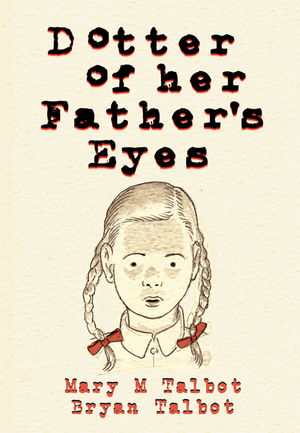 Eleven years ago, Pantheon Books published Marjan Satrapi’s “Persepolis,†a powerful, poignant comic book-memoir of Iran through the Islamic Revolution. The book educated and entertained readers as Satrapi took them back in time on a journey to showcase Iran through her eyes. The graphic novel was well received, went on to be listed as one of the best comics of the year, then turned into an animated film. This year, Dark Horse Comics looks to replicate such success with the soon to be released book “Dotter of Her Father’s Eyes.â€
Eleven years ago, Pantheon Books published Marjan Satrapi’s “Persepolis,†a powerful, poignant comic book-memoir of Iran through the Islamic Revolution. The book educated and entertained readers as Satrapi took them back in time on a journey to showcase Iran through her eyes. The graphic novel was well received, went on to be listed as one of the best comics of the year, then turned into an animated film. This year, Dark Horse Comics looks to replicate such success with the soon to be released book “Dotter of Her Father’s Eyes.â€
At first glance, “Dotter†feels strange-  a quick flip through will reveal there aren’t action scenes of hack and slash samurai, or existential superheroes with identity crisis. What you’ll find within are pages of the classic comic book look with an honest voice that quickly unfolds stories of what life was like for women in the old days. This graphic novel will reward readers with a new layer of appreciation for how far our society has come from the past and help develop a sense of where it’s going.
“Dotter†is the first graphic novel written by internationally acclaimed scholar Dr. Mary Talbot. Known for her work on language, gender and power, this graphic-memoir  deals with an abusive intellectual father, the English life in the ‘50s, and her difficult transition from girl to woman. Talbot takes her story further with parallels of the coming of age of Lucia Joyce, the daughter of 20th century Irish novelist, James Joyce.
The structure to Talbot’s parallel storyline of women from different eras, the issues each faced in their respected periods and the influence of one literary great, James Joyce, will amusingly recall to readers attention of Micheal Cunningham’s 1999 Pulitzer Prize novel “The Hours,†which also followed the parallel lives of women in different eras, presented unique societal issues of women, and were all impacted by the anther great English novelist, Virginia Woolf.
In “Dotters,†Talbot captivates with her precise choices in scenes. Each scene links cohesively from childhood to womanhood, all the while finds the proper nodes to then delve into the life of Joyce. Talbot intuitively illustrates the similar encounters women have, then contrasts each to bring home to readers the differences in the power social expectations had granted.
The artwork in “Dotters†is done by Eagle Award, Haxtar Award, Eisner Award winning comic book artist, Bryan Talbot, who also happens to be married to the writer. Known for his work with the popular series, “The Adventures of Luther Arkwright,†the artwork in this book will not distract you from the story, but enhance your experience as the retro style of the character drawings sets the atmosphere for the time periods the readers will journey through.
To distinguish between the Talbot-present, Talbot-past, and Joyce-past, the artist essentuates them with different colors and frame schemes. To depict the present, Talbot keeps the modern style of scenes with-in frames, as we are so accustomed to in comics. But for scenes that take place in the past, he rids the page of all the frames then tactfully immerses the entire page with sequences that never confuses you of the flow of events.
Next, to distinguish one past from another Talbot colors the 50’s with a warm sepia based color palette that innately carries an archival quality. Surrounded by sepia the red colors burst with power while greens give off life to each scene. Then to depict the earlier decades Talbot uses a cooler toned blue-green scheme where the blacks are darker, the contrasts are deeper and provide a more eclectic feel from all the rest.
In this graphic-memoir-biography, the Talbot writer-artist duo brings a perfect balance between story and art. One will enjoy the peerless pace of Talbot’s storytelling all the while enjoy the graceful art from the acclaimed Talbot artistry.
The Talbots continue the recent excellence in using the graphic novel as a tool to educate of important social issues. Although the issues are from a distant past, “Dotters†reminds us of the urgency in women’s issues and keeps the momentum moving along in the present and into the future.

Leave a Reply